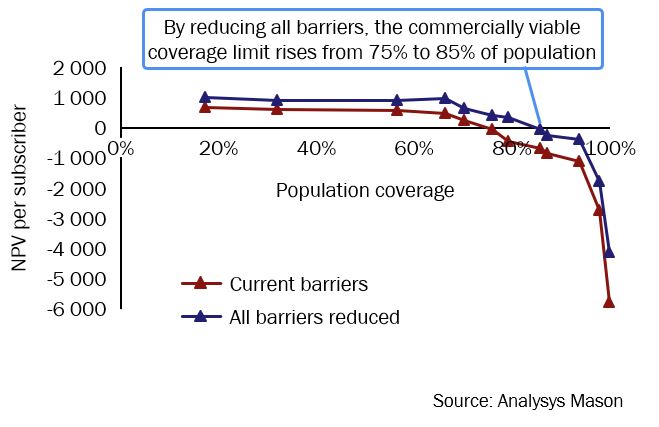We conducted the first study to quantify the impact of reducing barriers on the cost and timescales of FTTP roll-out
Project experience | Strategy
The problem
- We undertook a study, commissioned by BT, to quantify the time and cost impact of reducing a range of barriers to the deployment of ‘full fibre’ networks in the UK, identified as fibre to the premises (FTTP)
- The study was designed to inform the development of government policy, and to clarify the need for legislative changes that would facilitate the roll out of FTTP networks
The solution
- We quantified the impact of reducing three types of barriers to fibre roll-out:
- barriers to planning deployments create delays in commencing work. These delays can be caused by: the need to obtain permissions for street works and to deploy on private land, and the availability of network design personnel
- barriers to network deployment affect how quickly and cheaply the workforce can install the new fibre. These factors are affected by: the availability and effectiveness of deployment personnel, and the reuse of existing infrastructure
- other barriers relevant to the deployment of FTTP networks, including: access to multi-dwelling units, fibre deployment in new builds and additional taxes on broadband infrastructure
- The study also calculated how the commercial coverage limit could be increased by reducing barriers to fibre roll-out
Figure: FTTP viability by population coverage

The result
- Our work showed that reducing all of the identified barriers would result in a six-year decrease in the total time taken to achieve 100% population coverage and an almost GBP10 billion reduction in the total deployment cost (a reduction of approximately 30%)
A copy of the report is available here
We undertook a study, commissioned by our client, BT, to quantify the time and cost impact of reducing a range of barriers to the deployment of 'full fibre' networks in the UK. Our work showed that reducing all of the identified barriers would result in a six-year decrease in the total time taken to achieve 100% population coverage and an almost GBP10 billion reduction in the total deployment cost

